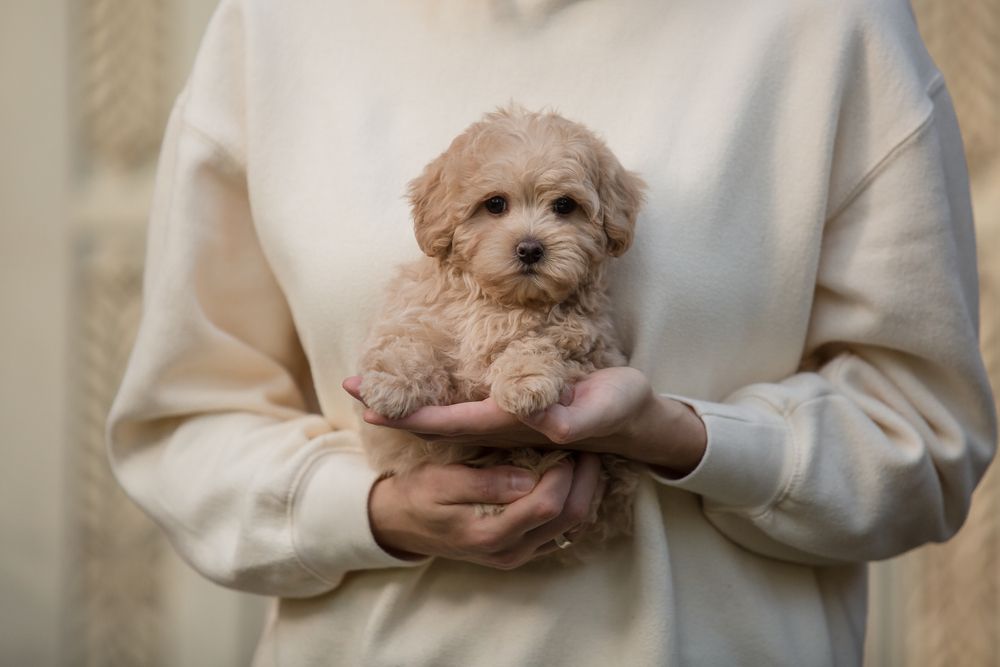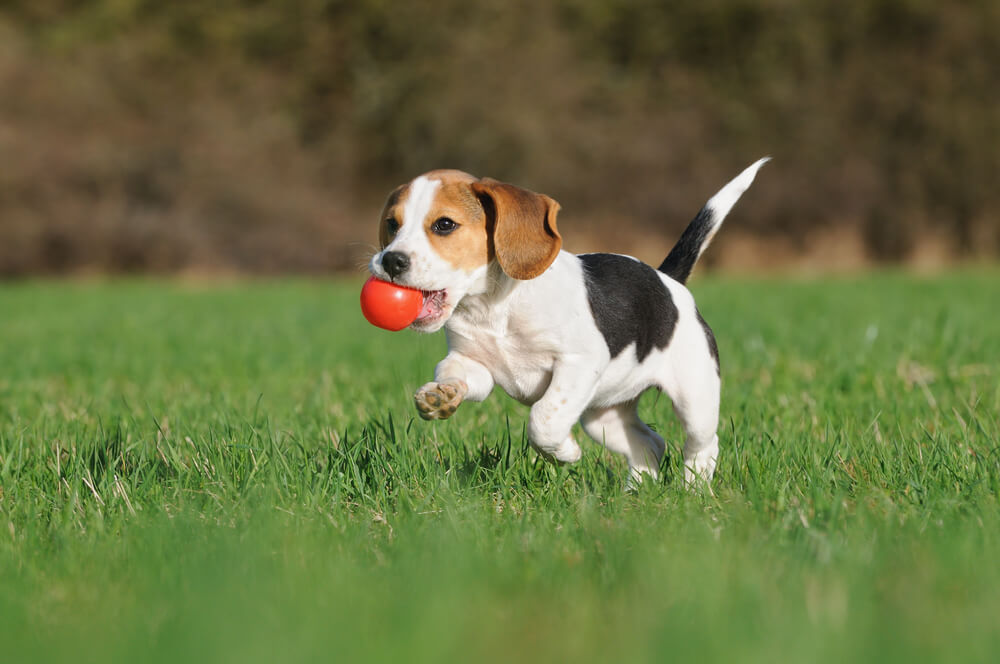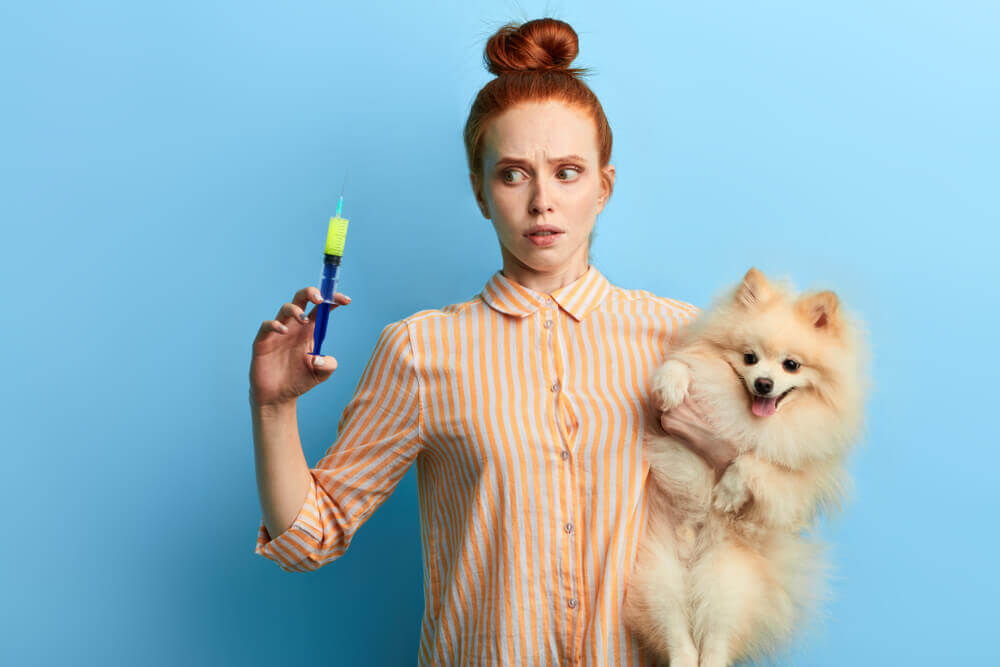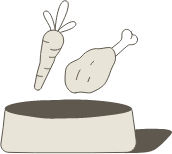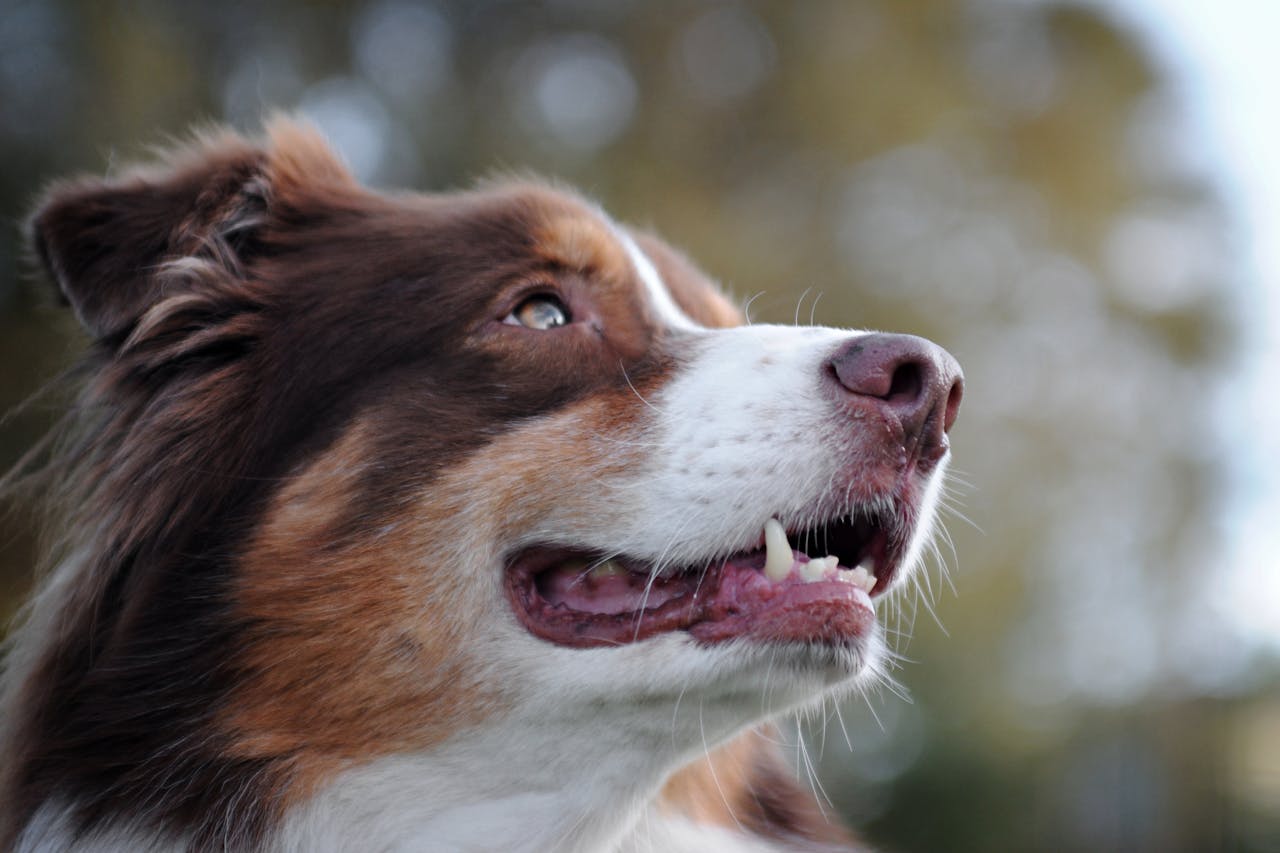Hey Ollie blog readers! We’re offering you an exclusive 60% OFF your starter box! Try now!
Nobody wants to talk about dog poop—until it looks weird. Then suddenly, it’s all you can think about.
Is that normal? Is it supposed to be that color? Why does it look like soft serve? Should I text a friend or call the vet?
As gross as it sounds, your dog’s poop is actually a window into their overall health. From hydration to digestion to possible food sensitivities, what’s in (or not in) the poop says a lot.
If you’ve ever found yourself googling “what does healthy dog poop look like?” while standing in your backyard with a poop bag in hand—this guide is for you.
We’ll break down exactly what healthy dog poop should look like, what warning signs to watch out for, and how fresh food (like Ollie) can play a major role in helping your pup stay regular and feel their best.
Healthy vs Unhealthy Dog Poop: Why It Matters
Every time your dog does their business, they’re giving you a little health update. Weird? Yes. Useful? Absolutely.
Let’s start with what’s considered normal. Healthy dog poop usually checks off the following boxes:
- Color: Rich, chocolate brown
- Shape: Log-like, easy to pick up
- Texture: Firm but not rock hard
- Smell: Mild (not sour or rotten)
- Coating: No slime or mucus
Now, that doesn’t mean every poop has to be picture-perfect. A single soft stool or slightly different color isn’t always a red flag. But patterns matter. If your dog’s poop is consistently off, too soft, too hard, greasy, pale, or just plain strange—it could be a sign that something’s not quite right.
Here’s the thing: your dog’s digestive system is deeply connected to what they eat. If they’re regularly dealing with tummy troubles, it’s often because their food isn’t working for them.
That’s where we come in. At Ollie, we craft fresh, vet-formulated meals using real, human-grade ingredients—no fillers, no weird by-products, and no surprises. Just clean, balanced nutrition that supports a healthy gut and (you guessed it) better poops.
Unhealthy Dog Poop Chart: 5 Warning Signs to Watch For
Not all dog poop is created equal. Some signs are harmless blips. Others? They’re your dog’s way of saying, “Hey, something’s not right down here.”
Here are five common types of unhealthy poop—and what they might mean:
1. Mushy or Unformed Poop
Looks like: Soft-serve ice cream or melted chocolate
What it means:
This is one of the most common signs of digestive trouble. It often points to food intolerance, poor-quality ingredients, or too much fat or filler in the diet. It could also happen after a sudden change in food (like switching kibble brands overnight).
What to do:
If mushy poop sticks around for more than a couple of days, take a look at what your dog is eating. Foods loaded with wheat, corn, or by-products are harder to digest.
Ollie fresh recipes are made with whole, simple ingredients and no artificial junk—easy on the stomach, easy to clean up after.
2. Greasy or Shiny Poop
Looks like: Normal shape, but it has a slick, oily sheen
What it means:
This usually means your dog isn’t absorbing fat properly. It can be a sign of malabsorption, often related to pancreas issues or high-fat diets. It might also show up if your pup is getting too many fatty treats or table scraps.
What to do:
Check their diet and avoid greasy leftovers. If it keeps happening, ask your vet about Exocrine Pancreatic Insufficiency (EPI) or other enzyme-related concerns.
3. Poop with Mucus
Looks like: Normal stool covered in a jelly-like coating
What it means:
A little mucus now and then isn’t a big deal. But a lot of slime could mean inflammation in the colon—often due to stress, parasites, or a sudden diet shift. It may also show up during food allergies or bacterial overgrowth.
What to do:
Look at what might’ve changed—new food, high-stress situations, or unfamiliar treats.
Probiotics can help, too. Ollie Probiotic Chews support gut balance and reduce inflammation with beneficial bacteria.
4. Black or Tarry Poop
Looks like: Very dark, sticky, or tar-like stool
What it means:
This could indicate digested blood in the upper gastrointestinal tract. It’s often linked to ulcers, internal bleeding, or reactions to medication (like NSAIDs).
What to do:
Call your vet—this is not something to monitor passively. Bring a sample if you can.
5. Very Pale, Gray, or Chalky Stool
Looks like: Light beige, grayish, or powdery poop
What it means:
This can be a sign of bile duct or liver issues, or too much calcium in the diet (like overdoing bone treats). It might also indicate your dog’s body isn’t digesting fat properly.
What to do:
If pale poop happens more than once or comes with other symptoms (like vomiting or yellowing gums), it’s time for a checkup. A full blood panel can rule out liver or pancreas concerns.
Quick Recap: What to Watch For
| Poop Type | What It Might Mean |
| Mushy/Unformed | Food sensitivity or poor digestion |
| Greasy/Shiny | Fat malabsorption or pancreas issues |
| Mucus Coating | Colon inflammation, allergy, or stress |
| Black/Tarry | Possible internal bleeding |
| Pale/Chalky | Bile or liver problem, calcium overload |
What Can Cause Unhealthy Dog Poop?
Not all poop problems come from illness. Sometimes, the issue is something as simple as a dietary ingredient that doesn’t sit well with your dog—or a change in routine that throws off their system.
Here are some of the most common causes of unhealthy dog poop:
Low-Quality Food
Dog food that’s packed with fillers, by-products, or artificial additives is harder for your dog’s body to process. That often leads to mushy, inconsistent, or greasy poop.
Ollie is made with real, human-grade meat, veggies, and no weird stuff. It’s the kind of food dogs were meant to eat—and their digestive system agrees.
Food Sensitivities or Allergies
Just like people, some dogs don’t do well with certain ingredients. Common triggers include beef, chicken, dairy, wheat, and soy. The reaction? Often, it shows up in the poop.
Signs of food sensitivity:
- Loose or mucusy stool
- Increased gas
- Occasional vomiting
- Itchy skin or ears (yep, poop and allergies can be related)
Stress or Anxiety
Big life changes—like moving, new visitors, or being left alone longer than usual—can mess with your dog’s gut. The result? Loose, unpredictable stool.
Dogs have a gut-brain connection, too. Their emotions can affect digestion more than you think.
Sudden Diet Changes
Switching your dog’s food too fast is a one-way ticket to upset stomach and sloppy poops. Their gut needs time to adjust to new ingredients.
Pro tip: Transition slowly over 7–10 days by gradually mixing new food with the old.
Parasites or Infections
Unhealthy poop can also be a sign of something more serious—like giardia, worms, or bacterial infections. These issues usually come with other red flags: vomiting, lethargy, or dramatic changes in stool appearance.
Always contact your vet if things seem off for more than a day or two.
Dehydration or Lack of Fiber
If your dog’s poop is dry, crumbly, or hard to pass, they may need more water or dietary fiber.
Ollie meals contain moisture-rich ingredients and are naturally high in fiber from real veggies like pumpkin, spinach, and peas—helping everything move along smoothly.

What Healthy Dog Poop Should Look Like
Now that we’ve covered the not-so-great stuff, let’s talk about what you do want to see in the yard.
Healthy dog poop is like the gold standard of your pup’s digestion—it means their body is absorbing nutrients, processing food properly, and staying hydrated. And yes, it also means less messy cleanup for you.
Here’s what healthy poop usually looks like:
Color: Chocolate Brown
That classic brown color means everything is moving through the digestive system the way it should. If the color shifts dramatically (black, gray, red, or yellow), it could mean something’s up with your dog’s liver, pancreas, or GI tract.
Shape: Log-Like & Compact
You’re looking for a firm, sausage-shaped log that holds together when picked up. It shouldn’t be too dry or too soft.
Consistency: Firm but Flexible
You want poop that’s firm enough to hold its shape, but not so hard that it’s difficult to pass. Think: the texture of Play-Doh—not pebbles, not pudding.
Coating: None at All
There shouldn’t be any slime, mucus, or shiny residue on the stool. A coating can signal inflammation or irritation in the colon.
Smell: Not Too Funky
Yes, it’s poop, it’s going to smell. But healthy dog poop shouldn’t be overly sour, metallic, or rotten. Extra-stinky stool often points to a poor diet or digestive imbalance.
Quick Poop Check: The “Four C’s” Method
| C | What to Look For |
| Color | Deep chocolate brown |
| Consistency | Firm, Play-Doh-like |
| Content | No blood, mucus, or odd bits |
| Coating | Clean—no slime or residue |
Getting poop like this starts with food that’s made for real digestion—not bulked up with fillers or mystery ingredients.
Ollie’s fresh meals are made from clean, simple foods that dogs digest easily. That means more nutrients get absorbed—and less ends up on your lawn.
How to Improve Your Dog’s Poop Quality
If your dog’s poop has been inconsistent—or just downright weird—don’t stress. The good news is, with a few smart changes, you can usually get things back on track. Here’s how to help your dog produce healthy, easy-to-pick-up poops (and feel better overall while you’re at it):
Switch to Fresh, Whole Food
The #1 thing you can do for your dog’s digestion? Feed them food their body actually recognizes.
Ollie’s fresh meals are made with real, human-grade meat and veggies—no fillers, by-products, or artificial preservatives. That means fewer digestive surprises and more consistent poop.
Most pet parents see a difference in just a week or two. Firmer stools, less stink, and better bathroom habits all around.
Transition Foods Gradually
If you’re moving your dog from kibble to fresh food (or making any dietary change), do it slowly.
Start with a small amount of new food mixed into their current meals, and increase it over 7–10 days. This gives your dog’s digestive system time to adjust and helps prevent soft or runny poop during the switch.
Add Probiotics to Support Gut Health
A balanced gut microbiome plays a huge role in poop quality. Probiotics can help regulate digestion, reduce bloating, and firm up stool.
Ollie Digestive Chews are a tasty, mess-free way to support your dog’s gut health with beneficial bacteria and enzymes that actually work.
Make Sure They’re Getting Enough Water
Dehydration can lead to dry, hard poop that’s painful to pass. Dogs eating mostly dry kibble may not get enough moisture from food alone.
Fresh food contains natural moisture, but make sure your pup always has access to clean water—especially after meals and exercise.
Stick to a Routine
Dogs thrive on consistency. Feeding your dog at the same time every day and keeping walks regular helps regulate digestion and bowel movements.
Bonus: It also makes your schedule more predictable—because nothing says “chaos” like a 3am potty emergency.
Cut Out Table Scraps and Greasy Treats
Human food—especially the fatty or spicy stuff—can wreak havoc on your dog’s stomach and cause unpredictable poop issues. Even one greasy bite can throw things off.
Stick to clean, limited-ingredient treats (like Ollie’s) that don’t mess with your dog’s digestion.
When to Call the Vet
Most poop issues clear up with a better diet and a little consistency. But sometimes, poop is your dog’s way of saying, “Hey, I need help.” Knowing when to call your vet can make a big difference—especially if the issue is more than just a temporary tummy upset.
Here are the signs that it’s time to check in with your vet:
Red Flags in Dog Poop
- Blood in the stool (bright red or dark/black)
- Black, tarry poop
- Pale or chalky stool
- Mucus-heavy or greasy texture that doesn’t improve
- Diarrhea lasting more than 48 hours
- Sudden constipation or very dry, hard stools
- Visible worms or unusual objects
- Ongoing changes even after adjusting diet
Other Symptoms to Watch For
If weird poop comes with any of the following, get a vet involved ASAP:
- Vomiting
- Lethargy or low energy
- Refusal to eat or drink
- Bloating or visible discomfort
- Weight loss
- Straining to poop or signs of pain
What Your Vet Might Do:
- Check a stool sample for parasites or bacteria
- Run bloodwork to assess liver, pancreas, or kidney function
- Recommend a prescription food trial for allergies or IBD
- Suggest adding digestive enzymes or probiotics
- Look at possible behavioral stressors if no physical cause is found
Pro Tip: If you’re headed to the vet, bring a fresh stool sample in a clean bag or container. It might not be glamorous, but it helps your vet get answers faster.
Your Dog’s Poop Says a Lot
Poop might not be the most glamorous part of pet parenting—but it’s one of the most useful. When your dog’s poop is healthy, it usually means their diet, digestion, and overall health are in a good place. When it’s not, their stool is often the first thing to show it.
The good news? You don’t have to become a poop detective forever. Most issues can be fixed with:
- A clean, consistent diet
- Plenty of hydration
- A gradual transition to better food
- A little gut support with probiotics
If your dog’s poop has been less than ideal, their food may be working against them—not with them.
Help Your Dog Poop Better with Ollie
At Ollie, we make fresh food that supports better digestion from the bowl to the backyard. Every recipe is vet-formulated, made with real human-grade meat and veggies, and slow-cooked to preserve nutrients—so your dog gets what they need without the junk that messes up their stomach.
- No fillers
- No by-products
- No artificial preservatives
- Just real food for real gut health
Want extra digestive support? Check out our:
- Probiotic Supplements – with probiotics and enzymes
- Limited-ingredient Treats – gentle on sensitive stomachs
- Fresh Dog Food – for dogs who need better nutrition (and better poops)
Because when your dog feels good on the inside, it shows on the outside—and in the poop bag, too.
FAQ: Healthy vs Unhealthy Dog Poop
What does unhealthy dog poop look like?
Unhealthy dog poop may be loose, greasy, discolored, overly hard, or coated in mucus. It can also smell unusually strong or foul. Consistently abnormal stool could be a sign of digestive problems, poor diet, or underlying health issues like parasites or food sensitivities.
What color is healthy dog poop?
Healthy dog poop should be chocolate brown. If your dog’s poop is black, red, yellow, gray, or chalky white, it may indicate a health issue that needs veterinary attention.
Is mushy dog poop a sign of illness?
Mushy or unformed dog poop can result from dietary issues, food intolerance, stress, or gastrointestinal upset. While one soft stool isn’t usually serious, chronic mushy poop may point to a food sensitivity or poor digestion.
How can I tell if my dog’s poop is healthy?
Check for the “Four C’s”:
- Color: Chocolate brown
- Consistency: Firm, like Play-Doh
- Content: No mucus, blood, or foreign objects
- Coating: Clean surface with no slime
Healthy poop is well-formed, easy to pick up, and has a mild smell.
What can cause changes in my dog’s poop?
Common causes include:
- Sudden diet changes
- Low-quality food
- Food allergies or sensitivities
- Stress or anxiety
- Parasites or infections
- Lack of hydration or fiber
Switching to a digestible, whole-food diet—like Ollie’s fresh meals—can help stabilize poop quickly.
Can dog food cause unhealthy poop?
Yes. Foods with artificial additives, by-products, and low-quality fillers can lead to inconsistent or unhealthy poop. Fresh, balanced meals made from real ingredients are easier to digest and support better stool quality.
How do I make my dog’s poop more solid?
To firm up your dog’s stool:
- Switch to high-quality, fresh food
- Add a dog-safe probiotic
- Avoid fatty or spicy table scraps
- Feed on a regular schedule
- Ensure your dog stays hydrated
Ollie’s meals and digestive supplements are designed to support firm, healthy stools.
When should I worry about my dog’s poop?
Call your vet if you notice:
- Blood in stool
- Black, tarry poop
- White, gray, or very pale poop
- Persistent diarrhea or constipation
- Vomiting, lethargy, or appetite loss
These signs may point to serious health conditions that need immediate attention.
Tagged As:
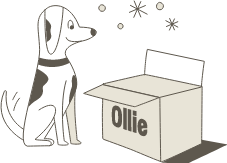
The nutrition your dog needs,
the food they want.

Enjoying our articles? Subscribe our Newsletters and get new articles directly to your inbox
You might also like
30 October 2025
8 MINS READ
Dog Dental Chart: Learn About Dog Dental Health
We all love a big, slobbery smile from our dogs. But if you’ve ever been hit with a wave of that signature “dog breath,” you’ve probably wondered what’s going on in there—and if you sh…
by Ollie Pets
30 October 2025
8 MINS READ
Dog Tongue Color Meaning & Chart: Black, Blue, Purple & Spotted
Let’s be honest—most of us don’t think about our dog’s tongue unless it’s giving us a sloppy kiss or hanging out after a game of fetch. But that tongue? It’s more than just a licker. I…
by Ollie Pets
30 October 2025
8 MINS READ
Dog Gum Color Meaning: Healthy vs. Unhealthy Signs
Ever lifted your dog’s lip and thought, “Huh. Is that what their gums usually look like?” If so, you’re not alone—and you’re also not overreacting. While gum checks might not be par…
by Ollie Pets

